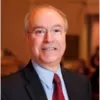COVID-19 Paving New Paths for Pharma Facilities
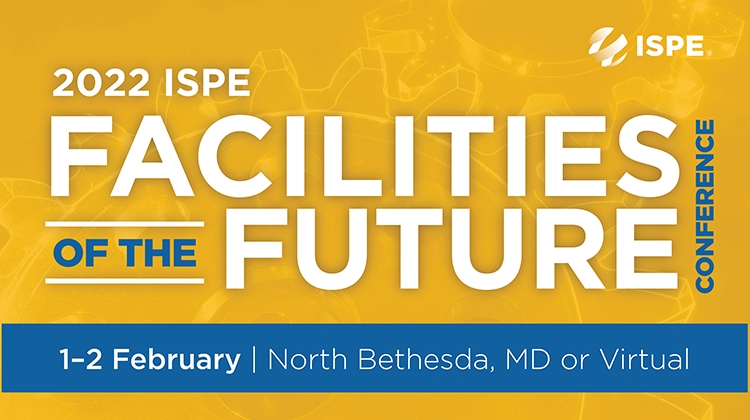
The ISPE 2022 Facilities of the Future Conference Opening Plenary provided views of lessons learned during the pandemic that will help the pharmaceutical industry to accelerate development of new facilities and manufacturing approaches.
Over 300 attendees both in person and virtual participated in the two-day event that focuses “on innovation and provides real solutions to very complex facilities challenges,” said Thomas B. Hartman, President and CEO, ISPE, in his welcome remarks during the Opening Plenary session. The conference runs from 1 February through 2 February in North Bethesda, MD.
The theme of the opening plenary session, “COVID’s Impact on Pharma Facilities of the Future,” focused on the industry’s demonstrated agility and flexibility during the pandemic, as well as how to apply the lessons learned to current and future facilities development. The conference itself is a good example of agility and flexibility; although postponed from last fall due to pandemic challenges, the conference is a key event within ISPE’s conference footprint, Hartman said. The conference features the latest innovations and developments for pharma facilities.
Jeffrey A. Biskup, PE, Session Leader and Conference Chair and Secretary, ISPE International Board of Directors, and CEO and Chairman of the Board, CRB, observed that the pandemic has been a challenging time, but “we have done a remarkable job to make the world a better and safer place.” There is potential to do more and to be better prepared to address future challenges and new treatments and opportunities, he said.
Foundation Update
Antonio R. Moreira, PhD, Chair of the ISPE Foundation Board and Vice Provost, Academic Affairs, University of Maryland, Baltimore County, provided an update on the ISPE Foundation’s activities and purpose after a video was shown about the Foundation’s activities.
“The Foundation helps ISPE to bring innovations and possibilities to life,” Moreira said, and its programs embody these opportunities. Initiatives in 2022 will focus on Workforce of the Future (with emphasis on diversity and inclusion), Women in Pharma®, and knowledge exchange. He reported that during 2021, more than 140 first-time donors contributed to the Foundation, and that the goal for 2022 is $500,000 in contributions.
2021 saw the launch of a diversity internship initiative with participation by Gilead Science and Nephron Pharmaceuticals. WuXi Biologics will join the program, with at least one more participating company lined up, Moreira reported. He noted that the five interns who participated in the 2021 program all received offers of employment.
-

Jim Stephanou Jim Stephanou
-
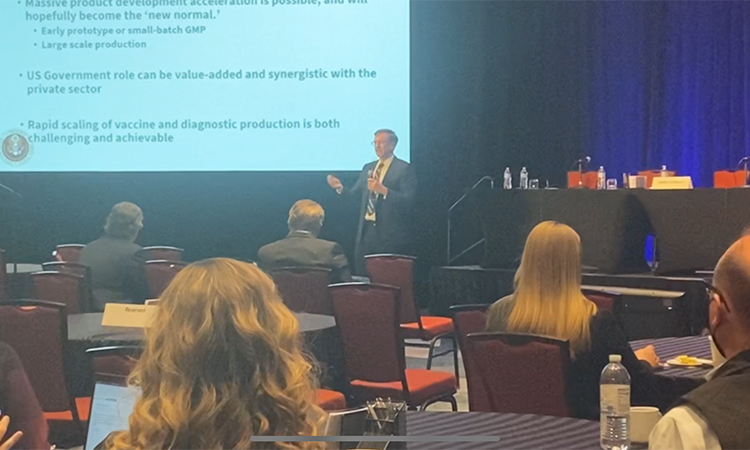
Matt Hepburn Matt Hepburn
-
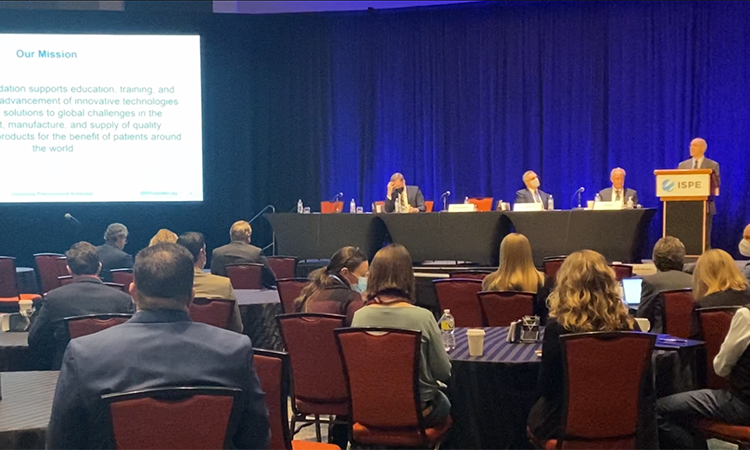
Tony Moreira Tony Moreira
-
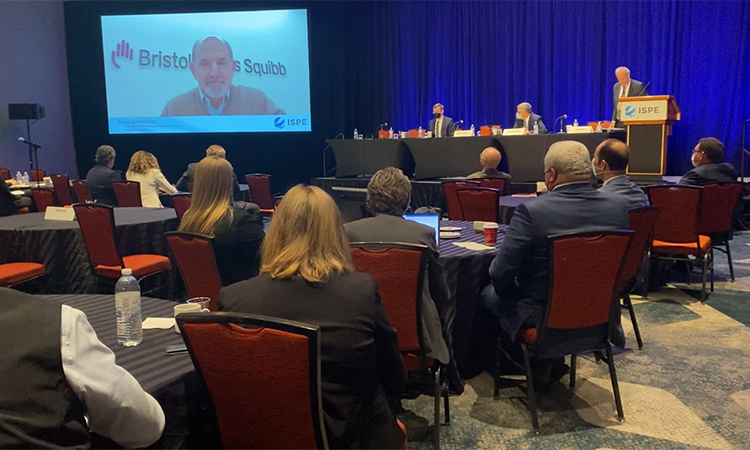
Lou Schmuckler Lou Schmuckler
Drivers for Future Success
Sharing best practices and learning from each other are how the industry survived the pandemic and can help with developing strategies to address future challenges, said Louis S. Schmukler, President, Global Product Development and Supply, Bristol-Myers Squibb, who gave a presentation entitled “The Road Ahead.”
While unforeseen disrupters and paradigm shifts make it hard to predict the future, there are four drivers that futurists say can help to prepare, Schmukler said: governance, demographics, technology, and resources. Using these enable leaders to get a broader perspective. While technical precision and divergent thinking is what pharma leaders do, he said convergent thinking with multiple possible outcomes is what is needed and planning for various future scenarios rather than a single outcome.
Schmukler described eight trends and factors that are affecting and reshaping the industry:
- Expanding therapies, growing modalities and platforms. There is a move to more targeted, precision, personalized medicines, and a more patient-centric focus.
- War for talent. This is happening now and will continue, including changing workforce demographics and new skills and abilities needed.
- New technologies accelerating drug development. He anticipates the time to develop drugs will be halved on average.
- Disruption in care delivery. After COVID-19, an increase in nonclinical settings versus hospitals for care will be seen, including growth in home care. New delivery system innovations will be needed.
- Trend to digitalization. This will accelerate telemedicine, and includes Industry 4.0.
- Pricing and access. Ever-increasing budget pressures on governments and health care providers will have a substantial impact on the industry, making cost of goods and return on investment more critical.
- Drive toward further globalization. Companies need a sound strategy that balances efficiency and localization.
- New ways of working. Changes such as increased remote work are driving new ways to consider productivity and teams.
All of these will impact the industry to a greater or lesser degree, he said. To adapt, he suggests, “We will need to be smart and disciplined.” It will be important to plan for the possibility of multiple outcomes and various scenarios. He suggested focus and excellence in efficiency, reliability, speed, and agility. Leaders need to ask the right questions, including:
- What is the right operating model?
- What capabilities are strategic and core, which are not, and how to differentially invest?
- What operations should be external/external?
- What role should standardization/common platforms play?
- What are risk management, continuity, and sustainability approaches?
- What is the most effective partnership model and management of inorganic innovation?
- What is the right digital strategy?
- What is the right way to create a more agile organization?
Schmukler favors embracing Agile, which can help organizations adapt to changing conditions and continually reinvent for sustained success; respond fast to market changes/customer and patient demands; and take action.
An ‘Execution’ Approach
James Stephanou, Vice President, Global Engineering Solutions at Merck, gave the next presentation, “Medicine is for the People! Access to Affordable Healthcare.” He suggested an approach that applies execution to facilities in capital programs to compress cost of goods sold, and the post-pandemic era is a good time to make this change in light of changes that have come due to COVID-19, such as working from home being a driver of innovation.
Quality, speed to patient, and cost of medicines are the elements of cost of goods; Stephanou maintains that it is possible to have all three despite traditional thinking that only two of three can be had. Doing things right makes it possible to provide the first two and also be a low-cost provider, he said. Steps such as compressing the timeline and removing waste can speed development for delivery to patients without sacrificing quality, he said. Address waste in processes, he said, and consider an assembly versus construction approach to manufacturing, similar to the early days of the automobile industry where there was no supply chain so all components of cars were made, then assembled. Parallel processes can also reduce hours and compress timelines. Another place to focus is on how to reduce redundancy while maintaining reliability.
“It’s about simple things: go after scheduling scope and quality, not cost (cost will be an outcome of that). Compress the timeline and compress cost of capital, which will affect cost of goods sold. Many of us are on this journey.”
Lessons from Operation Warp Speed
In the final presentation “American Pandemic Preparedness and Manufacturing,” Matthew Hepburn, MD, Senior Advisor to the Director, Pandemic Prevention, US Office of Science and Technology Policy, Executive Office of the President, shared some learnings from his participation in Operation Warp Speed, the public/private partnership in the US for the development and distribution of vaccines, treatments, and diagnostics for COVID-19.
Blending multidisciplinary teams was one reason for the success of Operation Warp Speed, he said, and organizations such as ISPE providing feedback and dialog is helpful in the ongoing pandemic work. Despite the successes, he noted that there are still thousands dying each day and that much still needs to be done. Hepburn emphasized that it is important to remember that so much already has been done and should be taken note of—the great progress that has been made is a message of hope despite the pandemic’s impact, and he said the pharmaceutical industry should be proud of its accomplishments.
Workforce development is one way to do more. Hepburn suggested, “Let’s try not to educate our next generation in antiquated ideas and technologies: we don’t want them to ‘mis learn.’ You are at an extraordinary time in the industry—you have seen all these changes in pandemic and can embrace these.”
Other lessons learned included:
- Thank every volunteer in clinical trials/clinical research. Hundreds of thousands of people domestically and globally participated in the accelerated clinical trials and this is why we have the products now.
- Thanks to the health care community (including the pharmaceutical manufacturing community), which saw 24/7 work in facilities, and adjustments/uncertainties/disruptions in supply chain. “Your people are unsung heroes, with the ability to flex, to make hundreds of millions of doses available, with billions administered worldwide—look what your industry did, what you did, and what your people did.”
- Recognize that in this pandemic that has felt so awful and personal, but the divisions and controversies and news stories creates a sense that we haven’t responded. “We need to have an opposite reaction! You should say look at what we’ve done!”
When Warp Speed announced in May 2020, he said that it seemed that it was impossible to achieve what eventually was achieved. “If that looked impossible then, and we did it—then what looks impossible now, why can’t we do that too?”
Moving forward, these lessons can be applied to ongoing pandemic work and other future developments.
New Normal concept. He expressed concern that the government or the nation could say Operation Warp Speed was a one-off and then go back to business as usual. The first step to showing this is not so is to do everything to shorten timelines to delivery for other products. Speed does not mean quality cannot or will not be high. “This was one of my favorite things about Warp Speed: we did both.”
What government does best to enable industry. This can be value added and synergistic. As part of the American Pandemic Preparedness Plan to get ready for future pandemics, Hepburn highlighted one of the “pillars” of the plan, Transforming Medical Defenses, which includes rapid development of vaccines and a range of therapeutics as well as quickly produced and available diagnostics.
“We want to maintain open dialog with you in setting quality standards, and related things, instead of developing those in a vacuum,” he said. “We want guidance from you and essentially keep up with you as you push forward with new technology.” He is hopeful that the industry can see the government as a partner to work together in embracing new technologies, and “ultimately take the transformation and progress we made in this pandemic and make it the new normal.”


